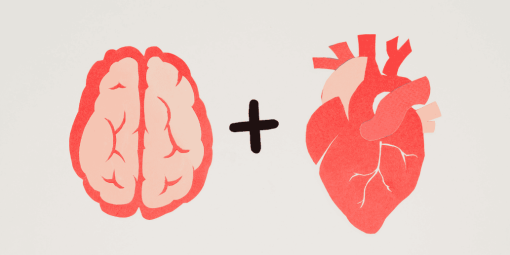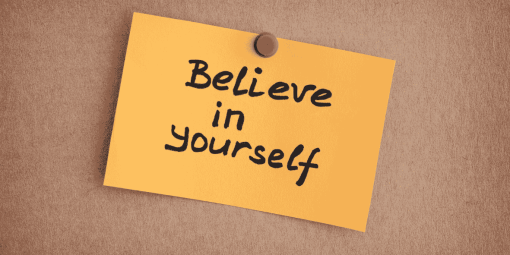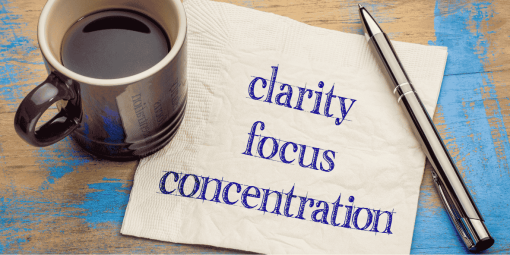1. Introduction: When Anger Feels Overwhelming
You feel it rising—your chest tightens, your heart races, maybe your vision blurs. A comment, a situation, or a memory has triggered a wave of anger and frustration so intense it feels uncontrollable. That old familiar voice pipes up: “Why does this always happen to me?”
If you’ve felt swallowed by rage, snapped at someone you care about, or carried resentment long past when it mattered, you’re not alone. Anger isn’t bad. It’s a human emotion—one that signals an unmet need, a boundary crossed, or injustice perceived. What matters is how you respond.
This guide helps you understand anger as a messenger—not a monster. You’ll learn a science‑backed framework to process anger without guilt, turn emotional triggers into insight, and begin channeling anger into clarity and strength.
2. What Is Anger Really About?
Anger is more than a burst of emotion—it’s usually a signal, not the root cause. Beneath the loudness of rage, you’ll often find fear, hurt, or frustration. When someone crosses your boundary—or reminds you of a past wound—your nervous system reacts with alerts: adrenaline surges, cortisol spikes, heart rate increases. You’re thrust into the panic cycle, and rational thought gives way to instinct.
That’s when your brain’s cognitive patterns shift. Instead of processing, you’re spiraling—overanalyzing, replaying, and reacting without pause. The inner critic often chimes in with harsh self-judgment like “Why am I like this?” or “What’s wrong with me?” But anger is not the enemy. It’s a teacher.
Anger becomes destructive only when we suppress emotional regulation or fail to interpret it compassionately. By seeing it clearly—and responding intentionally—you reclaim your power, turning emotional chaos into clarity.
3. Why We Struggle With Anger
Anger becomes problematic when its deeper origins go unaddressed:
- Emotional Suppression and Shame: Many people grow up believing anger is “bad” or “unspiritual.” So they bury it. With time, unmet feelings accumulate into Anxiety loops, panic triggers, or sudden outbursts that feel disconnected from present incidents.
- Reactive Behavior Over Insight: When triggers hit hard—criticism, disrespect, or unmet expectations—the immediate reaction is often impulsive. The mind rushes to fix or validate itself instead of reflecting on what’s really wounded. That reactive pattern fuels self-doubt and guilt later.
- ‘Must Be Perfect’ Mindset: Anger can be rooted in perfectionistic fear—fear of being judged, rejected, or considered flawed. When every detail of your life feels on trial, your nervous system turns on hyper-alert—adding mental exhaustion each time you fail to meet impossibly high standards.
- Building Emotional Resentment: If you regularly suppress small grievances—words unsaid, boundaries violated—you quietly build resentment. Over time, these tiny cells of frustration grow, making you irritable, disconnected, and more vulnerable to emotional fatigue.
- Jealousy and Comparative Frustration: Anger often mingles with resentment when you compare your life to others’. Seeing someone else’s success can trigger insecurity, fueling a spiral: “Why not me?” or “This isn’t fair,” intensifying emotional turbulence.
These reasons don’t make you less—they make you human, in need of clarity, connection, and self-compassion.
4. How Anger Affects Your Emotional Health
Unchecked anger doesn’t only flare—it slowly fractures your well-being. Here’s how the impact unfolds:
- Emotional Fatigue: Carrying constant underlying irritation drains your mental reservoir. You feel exhausted before you begin each day, as if each breath is weighed down with unresolved tension.
- Eroded Self-Trust: Anger spikes lead to second-guessing. You question your reactions, decisions, even your entire identity. That diminishes self-confidence and makes you dependent on external validation.
- Relationship Strain: Unprocessed anger often expresses as snarky comments, harsh tone, emotional withdrawal, or passive-aggressive behavior. These actions damage connection—even intimacy—with people you care about most.
- Chronic Guilt and Shame: After an outburst, guilt often follows. You apologize for feelings that were valid. If shame becomes chronic, you stop standing for yourself and begin to reduce your needs and boundaries.
- Blocked Growth Potential: When anger feels toxic, you may avoid challenges, suppress curiosity, or shy away from real conversations. Growth becomes fear-based instead of choice-based.
- Health Consequences: Hormonal fluctuations caused by repeated thunderstorms of cortisol strain the body. Over time, you may experience digestive disturbances, headaches, or tension because the nervous system is chronically overloaded.
But process anger correctly—and it becomes CURATIVE, not corrosive. Emotionally aligned introspection can lift pressure instead of adding guilt.
5. A Step‑by‑Step Framework to Turn Anger Into Strength
Here’s a structured yet gentle way—your 5‑step anger transformation method—backed by science and real‑life practice:
Step 1: Pause and Breathe Out the Heat
When anger spikes, try a 60‑second breathing technique: inhale for 4, hold for 2, exhale for 6. Repeat five times. This activates the parasympathetic nervous system, helping you regulate the reaction before you act.
Journal Prompt: What emotion am I actually feeling beneath this anger? Is it fear? Hurt? Frustration?
Step 2: Identify the Trigger Without Self‑Judgment
Instead of emotional suppression or blame, ask: “What crossed the line for me?” Maybe the trigger was a broken promise, disrespect, or your own nighttime fatigue making everything feel worse.
Real-Life Example: Maya realized after yelling at her partner that the true issue wasn’t the argument—it was fear of losing emotional safety. When labeled clearly, the anger shifted from destructive to actionable (talking compassionately instead of reacting).
Step 3: Reframe Anger as a Signal for Action
Instead of thinking, “I’m a bad person for feeling this,” reframe: “This anger is showing me what needs boundaries.” Anger signals energy—it can be transformed into assertive boundary enforcement, a clear conversation, or a self-protective decision.
Science Insight: Research shows that when people reframe anger as motivation rather than threat, cortisol levels drop and self‑confidence improves.
Step 4: Channel Energy Into Constructive Action
Rather than venting in anger loops, direct that energy into something productive: journaling, creating, exercising, or having a calm conversation. Anger doesn’t need to explode to be heard.
Journal Prompt: What positive step can I take that honors this feeling without harming myself or others?
Step 5: Reflect and Forgive Yourself
After the moment passes, quietly reflect: “What did I learn about myself?” “How can I do things differently next time?” Forgiveness doesn’t mean denial—it means compassion.
Journal Prompt: What would I tell someone I love in this same position?
6. Real-Life Example: Transforming Rage into Reason
Consider Alex, who constantly snapped at coworkers when projects went wrong. He believed his anger made him seem competent, but it alienated everyone. After practicing this framework, Alex started noticing that his anger was rooted in self-doubt—fear that failure meant he wasn’t enough.
By using breathing techniques, naming his triggers (fear of criticism), and reframing the energy into assertive communication, Alex apologized calmly, set clearer boundaries, and then redirected the frustration toward mentoring. His anger didn’t disappear—it became a force for leadership rather than division.
7. Journaling Prompts to Process Anger
Journaling isn’t just writing—it’s a reflective tool to uncover emotional triggers, process reactive energy, and pave a new pathway forward. Use these prompts thoughtfully:
- “What emotion lies underneath this anger?”
Is it fear of being dismissed? Lost control? Boredom or past hurt resurrected? - “What boundary was crossed or need unmet?”
Are you angry because someone disregarded your limits or broke your trust? - “What would I feel without the anger?”
Sometimes anger covers sadness, shame, or exhaustion. What emotion will surface when you allow yourself to feel it fully? - “What action aligns with respect, not reaction?”
Could calm assertiveness, clear communication, or quiet withdrawal be more productive than explosion? - “What would I say to a friend feeling this way?”
We often extend more compassion to others. That voice can guide your self-kindness, too. - “What did anger help me see today?”
A boundary, a pattern, an unaddressed need—anger isn’t wasted energy if you allow it to teach. - “How can I forgive myself?”
Acknowledge reaction without judgment. Remind yourself: “I am learning.”
Using these prompts regularly helps rewire cognitive patterns from impulsive loops to purposeful self-reflection.
Use our tool to get more ideas Advanced Journal Prompt Generator
8. Motivational Support: What You Need to Hear Right Now
When anger rises, it’s easy to feel small, ashamed, or out of control. But you need to hear this:
You are not weak. You are deeply human. And you are allowed to feel your anger—without guilt or ruin.
You likely feel driven to correct everything instantly. But peace isn’t found in silence—it’s found by listening. Your anger is a sign that something matters. That you matter.
Here’s what to remind yourself when the inner critic says you did it “wrong”:
“Anger is not failure. It’s feedback.”
“You don’t have to be perfect to be heard.”
“You are allowed to stand up—even softly—and still be kind.”
When you respond from clarity instead of reaction, your anger transforms. The louder your emotion, the more important it becomes to anchor yourself in calm strength.
Your worth is not tied to how well you manage your anger. You deserve respect—even from yourself.
9. When to Seek Help
Walking this path alone takes courage. But sometimes, you need more than tools—you need guided support. Reaching out is not weakness—it’s wisdom.
Consider external help if:
- Anger feels uncontrollable or frightening even after you’ve tried calming strategies.
- You frequently hurt others unintentionally, then recede with deep remorse.
- You rely on substances or compulsive behaviors to numb or “bury” emotional explosions.
- You’re stuck in guilt or shame loops, unable to move forward despite reflection—feeling helpless in change.
- You experience flashbacks or rage tied to past trauma, out of proportion to current events.
Professional support—like therapy, trauma‑informed coaching, or anger management—offers emotional safety and relational safety to explore these layers. It’s not a sign that you failed. It shows you value your peace enough to invest.
You don’t need to walk this path alone. Compassionate experts can guide you through reframing, impulse control, emotional regulation, and building resilience.
10. Final Thoughts: Turning Anger into Strength
Anger doesn’t make you less. It makes you aware—aware of injustice, boundaries, and personal limits. When processed well, it becomes a bridge to emotional resilience and healthy communication.
You don’t have to live in guilt or fear after an emotional reaction. You can take those moments, treat them like messengers, and choose a different response next time.
This isn’t about silencing your anger. It’s about listening. Reframing. Acting with integrity. You are not your impulses—you are the wisdom behind them.
Let your anger teach you—not defeat you.
FAQs: Turning Anger into Strength
Q: Why do I feel angry and guilty afterward?
Anger often hides deeper pain or fear. Guilt arises when your emotional response feels disproportionate. Treat the guilt not as punishment but as a sign that you care—and a chance to process with self-compassion.
Q: Can anger be positive?
Yes. Anger is a signal—a push toward action or self‑respect. When directed consciously, it becomes a powerful motivator to advocate for boundaries or personal dignity.
Q: How quickly does the 5‑step method work?
You can see immediate relief from step‑1 breath and naming. Full emotional rewiring takes weeks of practice and pausing the emotional fire before acting.
Q: Is therapy necessary for anger management?
Not always—but it’s helpful when patterns persist despite your best efforts. A trained professional can guide you through emotional triggers, guilt, and deeper relational patterns.Q: What are journal prompts for controlling anger?
Start with: “What am I actually feeling beneath this anger?” Then move to: “What is one positive action I can take instead of reacting?” Reflect daily or after triggers to build clarity and growth.
Read more
How to Stop Overthinking When Everything Feels Out of Control
When Everyone Else Seems Happier: How to Honestly Reclaim Joy in Your Own Life






